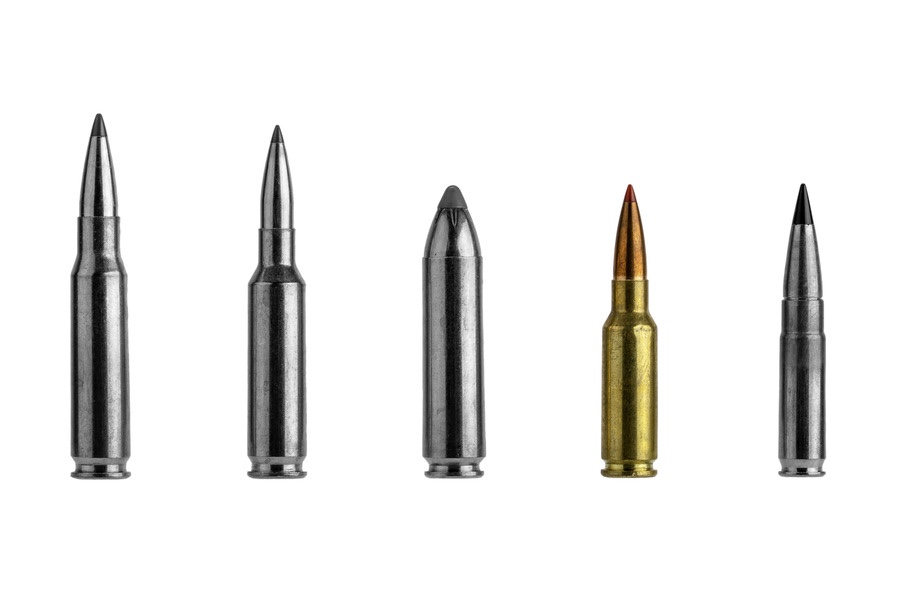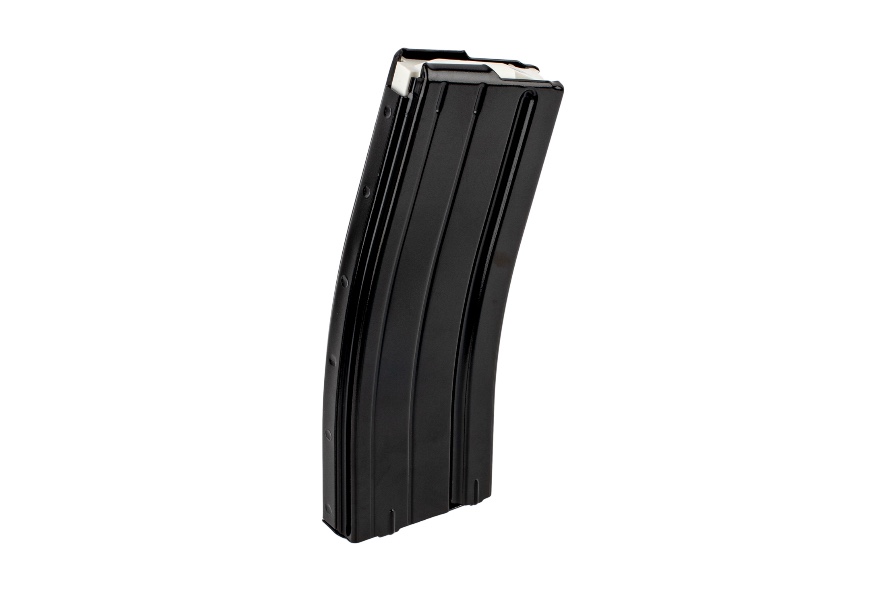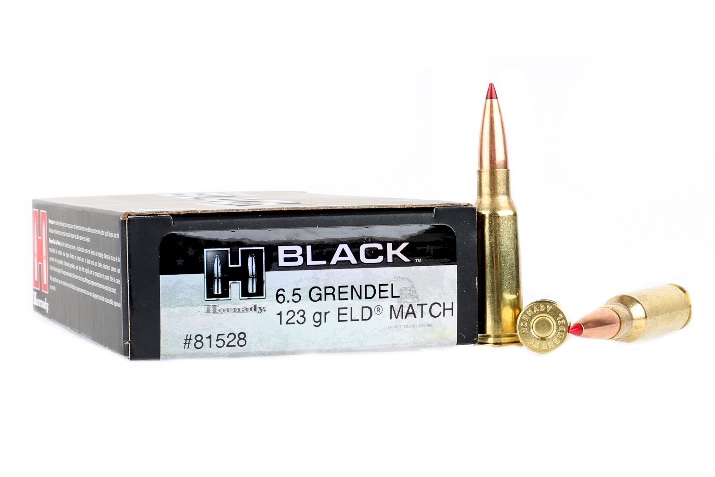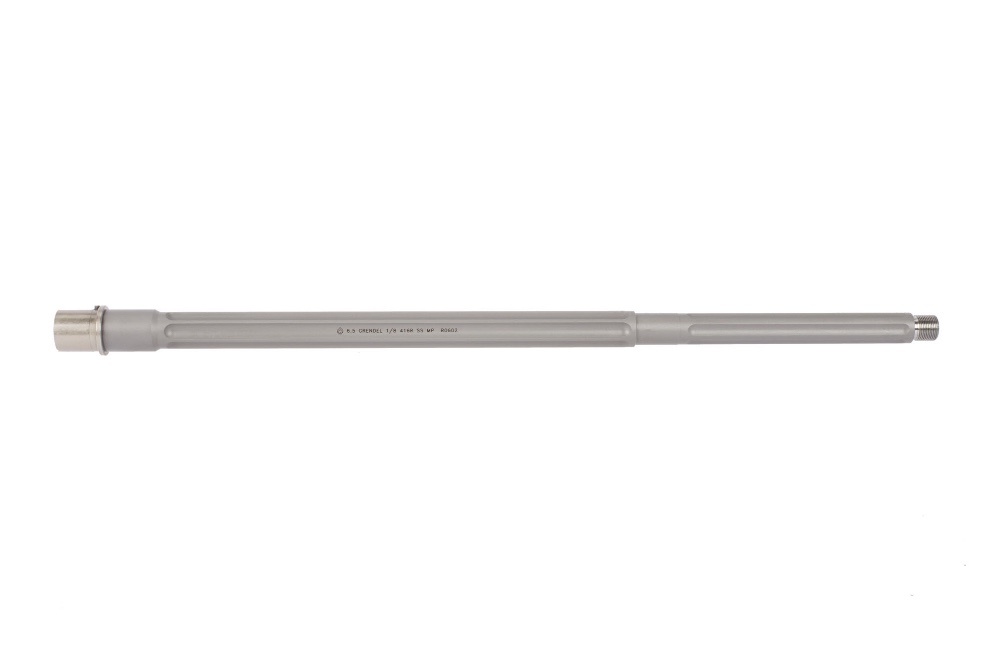
What’s all the hype about with the 6.5 Grendel?
The 6.5 Grendel doesn’t fit next to the 6.5 Creedmoor in a side-by-side comparison, despite similar concepts and similar naming structure. Sure, they shoot the same diameter bullet – and very accurately at that, but that’s about where the similarities end. So, what’s all the hype?
Simply put, you can do more with your AR-15 rifle than you could before with a much easier conversion, that doesn’t get you outside of the realm of the effectiveness for the AR platform, and you can do it while driving tacks out to 750 yards and maybe then some.
You aren’t going to win any benchrest competitions with the 6.5 Grendel, but then, you weren’t going to be competitive at those ranges and with those specifications in a semi-auto sporting rifle either. The Grendel is very interesting for those who want significantly better accuracy; good recoil profile that compares favorably with the .223 as well as range that nearly triples the on-target range of the native offering.
Yes, the ammunition is going to cost you more, and the components aren’t as “mainstream” as the native cartridge/caliber choices, but you get near drop-in ease of implementation, with “almost unbelievable” improvements in accuracy and range.
What’s the hype about the 6.5 Grendel you ask? It’s a better offering than standard AR folks have had for shooting accurately to 750 yards than ever before, without one off-builds. And it is affordable. You’re taking a gun that is capable of MOA under some pretty exacting specifications which require significant tweaking at minimum to get there and making it a native ½ minute semi-auto for about the price of a decent bolt action rifle in additional costs.
You can’t do that with a 6.5 Creedmoor affordably, and you cannot expect too much more from a platform that routinely catches flack when it shows up to longer range competitions. You may be able to find full factory builds on sale for half that of the Creedmoor – and that means you can be shooting a lot of intermediate range 6.5’s well before you match that price tag – and you can usually get an upper or a whole rifle faster than the larger 6.5.
Is it genuinely competing with the 6.5 Creedmoor and other strategically long range cartridges in the “6mm class”
No, the 6.5 Grendel isn’t competitive with the “6mm’s” generally speaking, but it’s not designed to be competitive with those rounds either. It was built to deliver exceptional accuracy and it does that, but it was designed to do that in a shorter, lighter, semi-automatic rifle, like the AR-15. It has a special purpose, but that special purpose isn’t 850+ yards, per se. It’s also a lot more approachable for AR-15 purists, because it drops into the normal platform, instead of the larger .308 AR style variant.
Just looking at a 6.5 Creedmoor cartridge vs. a 6.5 Grendel almost tells the tale of what to expect from the different offerings, but it’s a nuanced story with a lot of very cool features on both sides. You kind of just have to align with one or the other, or both, in separate configurations – especially if you are dropping either cartridge onto the backbone of the AR platform. They are very different beasts, and both are definitely beasts in their own right.

To say that a 6.5 Grendel is going to compete with benchrest cartridge offerings that have been punching 5-shot one-hole targets for decades is sort of ridiculous – it’s designed and built to fire reliably out of a basic AR-15 setup, with a bolt/carrier/barrel change. You’ll need a magazine too, but they aren’t typically hard to find. And that’s kind of the beauty of the Grendel in 6.5 – it’s approachable, can actually be found occasionally on the market instead of being a myth, and it doesn’t try to be something it isn’t.
If you want to shoot $3-4 a round ammo there are plenty of benchrest cartridges that will put you there. If you want to shoot a 6.5 Creedmoor on benchrest, you aren’t really opting for an AR anyways. So yeah – they do different things.
Bolt guns are the real domain for one hole targets that need to be in that one hole configuration all the time.
The cool thing about the 6.5 Grendel is that out to regular distances for range work, it’s going to get you really close to that desirable one-hole target, and you are probably less than 1k out of pocket on a decent upper receiver build, or less than $1500 on a dedicated factory rifle on the intermediate to high end. Sometimes you can find the kits or rifles at half those respective prices too – so yeah – it’s approachable for high end accuracy out of an AR.
If you’re talking about paper targets, the 6.5 Grendel is good to go to 750 yards and the 6.5 Creedmoor is good to twice that, but the Creedmoor won’t achieve those numbers out of a 20” or 22” barrel on an AR. In the field you can expect out of a typical AR configuration for the respective builds, about 650+ yards on the 6.5 Grendel and about 850+ yards on the Creedmoor, with both requiring a well dialed optic and some adjustment at those extreme distances to take a deer-sized animal at that range.
Ideally, you’re shooting a 6.5 Grendel out of a 20 or a 24 inch barrel from the AR, and you’re getting the most out of a 6.5 Creedmoor at a 24”+ barrel, with a 26” or 28” barrel being optimal for the 6.5 Creedmoor. Note: 24” Grendel barrels are basically a myth for the AR – super hard to find unless bespoke.
In the field hunting for deer, it almost makes more sense to be using the 6.5 Grendel unless you like the 6.5 Creedmoor so much you don’t mind carrying an AR that is 12+ pounds and has worse accuracy than the cheaper, lighter bolt action in the same caliber (Creedmoor). If you’re hunting for deer at greater than 650 yards with an AR, you may not be taking appropriate shots, even with a tack driver like the 6.5 class.
What’s a realistic expectation of all things equal with off the shelf components and an off the shelf or simple maker’s build?
You can get to ½ MOA all day long. But that may not even be the goal. What’s probably even more interesting, is that the 6.5 Grendel makes a compelling case as the gateway drug to the precision long range shooting world to allow casuals the opportunity to test the waters and see if they like it before they commit 15 weeks of pay to dip their toes in the long range precision game.
You get to test if you like tromping out 750 yards to get a target after only a handful of shots.
You get to test if you like adjusting windage for slight shifts in crosswind activity on the regular, so you don’t ruin that pretty target out there at 750 yards.

You get to find out if you mind only shooting $40 worth of ammunition on a range trip because you take 2-3 minutes or more playing around with the notepad and the settings and your bench configuration at the range between each shot.
You get to see what it’s like to not ALWAYS have a flyer on your AR target.
Here are the numbers for a basic comparison:
6.5 Grendel approximate average performance based on typical grain weights:
90 grain bullet; ~2875 fps velocity; ~1650 ft. lbs. of energy
120 grain bullet; ~2700 fps velocity; ~1950 ft. lbs. of energy
123 grain bullet; ~2675 fps velocity; ~1910 ft. lbs. of energy
130 grain bullet; ~2500 fps velocity; ~1810 ft. lbs. of energy
Note: shorter barrels than 24” are going to see some reduction in velocity and may see larger standard deviations.
6.5 Creedmoor approximate average performance based on typical grain weights:
120 grain bullet; ~3075 fps velocity; ~2450 ft. lbs. of energy
143 grain bullet; ~2750 fps velocity; ~2250 ft. lbs. of energy
Note: these are out of a 28 inch barrel, with a 26 or 28” barrel being optimal for the Cartridge; the average length of Creedmoor barrels for the AR308 platform is probably in the 20-22 inch range, so you can expect these velocities and the ultimate range of the projectile to take big hits.
The 6mm PPC that the original case for the Grendel was designed from, is a powerhouse in history, and the 6mm’s and 6.5mm classes are brilliant when it comes to delivering on target for accuracy. Ultimately, they are a great way to send a projectile on a man sized target or a deer sized target. That’s why the AR market has adapted to them so well. The terminal ballistics on both of the 6.5’s are excellent for hunting, and suitable for some military use cases. And the extended range on both the Grendel and the Creedmoor, while totally serving different goals, are incredible.
What can you expect? A very capable cartridge with a very nice range of activities with off-the-shelf ammunition that doesn’t cost more than $2 a round usually. The price probably has a bit of a kicker during times of low ammunition volumes, but it isn’t detrimental to the type of shooting that 6.5 shooters and hunters are doing. It’s a safe place to be for someone who wants more than a decent accuracy upgrade to their favorite rifle platform (the AR, obviously) and doesn’t want to be too far into the weeds for the privilege of it.
What was the original intent of the 6.5 Grendel
The original intent is touched upon up further in this article, but here’s a more in-depth exploration to help clarify how the 6.5 Grendel, despite being a bit less popular with the precision shooter crowd in the AR world, has outperformed its original intent in many observer’s minds.
Basically, the designer (Bill Alexander) wanted to outperform the .223 Remington and 5.56×45, with a longer effective range and that could be used in the normal OAL/magazine constraints of the AR. Pairing with Lapua Ballistics expert Janne Pohjoispaa and Arne Brennan, a competitive shooter, Alexander, who owns Alexander Arms, launched the product at a blackwater facility where it was more accurate than the .308 at intermediate distances and still had supersonic velocity at 1200 yards.
So, if anything you might gather from those statements – it should be that it was meant to be used in a military rifle, for use in battle. And meant to be better than the .223/5.56 and the fact that recoil is half that of the .308 and intermediate distance accuracy is better, it seems like it delivered on design parameters.
Has the 6.5 Grendel lived up to the hype?
It seems obvious by the sold out products in the space, and the demand for ammunition that it has gained more than a few fans or followers. But the basic performance promises of the cartridge make it very interesting for those who want to deer hunt with their AR out further; or want a flatter shooting, better terminal performance round for warfighting or defensive purposes.
It’s not the 1200 yard gun the Creedmoor can be with a long barrel and a bolt action. But is it the better option for those who value the numbers and want the familiarity and approachability of the AR?
It hasn’t won a contract yet for U.S. military adoption. The 6.8SPC hasn’t either, thanks to the cost prohibitive nature of swapping out a decades old relationship with the 5.56×45. Interestingly the 6.5 Grendel is being developed in a Zastava rifle that looks to be adopted eventually by the Serbian military forces.
The 6.8SPC is an interesting cartridge to compare beside the 6.5 Grendel:
6.8SPC approximate average performance based on typical grain weights:
115 grain bullet; ~2575 fps velocity; ~1675 ft. lbs. of energy
120 grain bullet; ~2450 fps velocity; ~1600 ft. lbs. of energy
Note: this is out of a 16 inch barrel which aligns well with military use cases, generally.
Given the nature of the things you can do with the Grendel out of a standard AR, it’s pretty safe to assume that the cartridge and subsequent builds on that platform have lived up to the hype.
Where is the sweet spot for the 6.5 Grendel?

Shooting out of a 20” barrel on the AR would be nearly ideal thanks to the increased stiffness of the barrel, and the fact that the only real gain is tighter standard deviation ranges and some velocity past 600 yards if using a larger barrel length. The original manufacturer itself (Alexander Arms) points to a preference of 20” and 24” barrel lengths.
If you are hunting or target shooting past 450 yards and out to about 700, you can be well served by the 20” barrel and some basic understandings of your optic and the characteristics and bullet drops for the cartridge you are shooting.
On an AR, this makes it even more approachable than it already was, relative to the 6.5 Creedmoor, which is great on the AR, but much better on a long barreled bolt action in both target use and field use going after bigger game.
Some final notes about the 6.5 Grendel in an AR build
It’s a winner. It’s affordable. It’s realistic. It’s not pushing the absolute limits of the AR platform for no reason, and it can really get you where you want to be on an upper receiver platform, which may not be the case for many other alternatives.
The 6.5 Grendel, despite not being chosen for a military contract, is well within the appropriate performance ranges to be considered a better alternative for nearly everything compared to the 5.56/.223, except when you factor in the access to cheaper ammunition that comes from being the darling of the US Armed Forces since the late 60’s. If you are not shooting 30 rounds at a time, but instead, 1 every 30-40 seconds, the Grendel is a compelling offering out of the AR, especially when you like tight groups and want to squeeze something different out of the muzzle of your AR.
If you need a dual purpose rig for target work and deer harvesting, the 6.5 Grendel does not disappoint.
Primary Focus is a weekly feature from Primary Arms that covers various firearms related subjects.


That was a great write up and answered a lot of questions that I’ve had about the various 6 / 6x mm cartridges that have been popping up… Seems that something like the 6.5 Grendel and the 6.5 Creedmoor are the cartridges we should have had all along instead of 5.56×45 and 7.62×51…
Replaced a .223 barrel with a faxon 6.5 grendel barrel and the bolt head, piston driven gun. No other changes. Works perfectly. Using wolf ammo (thankfully scored a stock when it was 28 cents) I get about an MOA @ 300 yards with a 6 power scope and 16 inch barrel. Great round and superior in every way to 223/556.